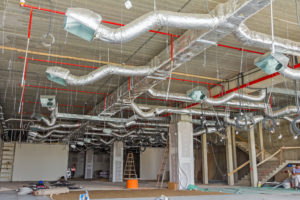
Projects on school property are nearly a constant in the construction industry. Schools seem to always be updating, building, or refurbishing. As Jason recently described, projects on schools can be either public or private depending on the nature of the school itself. Generally, the determination is simple: If it’s a public school, it’s a public project and the recourse for non-payment is a bond claim; If it’s a private school, it’s a private project and mechanics lien laws apply.
This information is generally available on the website of the school itself or, if the school is public, through the school district. It’s important to determine the nature of the school, and accordingly, the project, because different rules, requirements, and deadlines apply to bond claims and mechanics liens, and the notices for each. It is also important to note that these distinctions track throughout the entire spectrum of school levels – that is the same determination can, and must, be made for preschools all the way up to universities.
Some situations, however, can be slightly more complicated.
Charter Schools – What Are They?
Charter schools present one of these tricky seeming situations. Different aspects of a charter school can seem to make it seem both public and private, or some conglomeration of the two. Charter schools are more prevalent in some areas than others. Here in New Orleans, especially in the time since Hurricane Katrina, Charter Schools have sprung up seemingly all over as a solution for and an “alternative” to the admittedly struggling public school system.
To start it may help to define what exactly a charter school is.
charter schools are public elementary and secondary schoolsAccording to the National Charter School Resource Center, despite the fact that students attend charter schools through choice, not through assignment by school district, charter schools are “public elementary and secondary schools that are newly created or adapted from existing schools by developers to pursue specific educational objectives and are exempt from significant state or local rules that inhibit flexible management.” Charter schools are operated by a board of directors, and are authorized by the entities allowed to authorize by the state in which they are located, or the district of which they are a part. The authorizing entity can be a school district, a municipality, an institute of higher learning, the state department of education, or others.
While charter schools often exhibit qualities similar to private schools, they are typically treated as public schools. However, the classification of construction projects at charter schools can vary based on key factors, particularly property ownership and funding sources. If the land is owned by a private entity, such as a 501(c)(3) non-profit or a non-government charter organization, the project would be considered a private, commercial job.
Conversely, if the land is publicly owned by a city, school district, or similar entity, it would be classified as a public job. This distinction allows for nuance in classification. For securing payment on a charter school construction project, the appropriate recourse may involve either a mechanics lien or the contractor’s bond—provided the project’s overall amount is sufficient to trigger the bond provisions under state law or if a bond is supplied for any other reason.